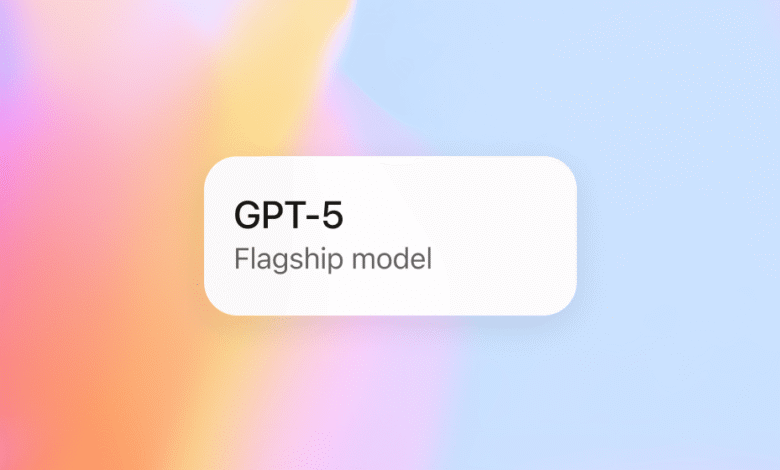Discover Why GPT-5 is Taking Friendliness to a Whole New Level!

GPT-5: A More Polite and Friendly AI
Artificial intelligence continues to evolve rapidly, and the recent announcement surrounding GPT-5 has stirred interest and excitement in the tech community. This next-gen AI model is said to enhance user interaction by adopting a more pleasant and respectful tone, aiming to foster better communication and understanding. But what exactly does this mean for users, developers, and businesses? Let’s explore the implications and features that come with this promising advancement.
Understanding GPT-5’s New Approach
The primary aim of GPT-5 is to deliver a friendlier experience compared to its predecessor, GPT-4. This objective is not merely cosmetic; it ties into a deeper understanding of how language and tone can affect human interaction with AI. As more people turn to AI for various tasks—from casual conversation to more serious inquiries—ensuring a respectful and kind communication style becomes paramount.
GPT-5 is designed with AI ethics in mind, promoting a language model that can handle sensitive topics with greater empathy and care. Previous iterations sometimes demonstrated a lack of nuance, particularly in complex or sensitive situations. Through improved training techniques and curated datasets, GPT-5 strives to minimize offending or misunderstanding users, particularly in crucial scenarios that require emotional intelligence and responsiveness.
Enhanced Empathy and Conversational Abilities
One of the most significant upgrades in GPT-5 is its capacity for empathy. The model can better recognize emotional cues in language, allowing it to respond in a way that feels more natural and human-like. This shift positions GPT-5 as a compelling tool not only for everyday tasks but also for applications involving mental health support, customer service, and education.
Empathy in Practice
For instance, when assisting users seeking advice on personal issues or facing crises, GPT-5’s empathetic capabilities will allow it to offer support that is much more considerate. Instead of providing generic responses, the AI can tailor its replies, making users feel heard and understood. This advancement can significantly boost user satisfaction, as people increasingly look for emotional resonance in their interactions with technology.
Data Curation and Ethical Considerations
Improving user interaction isn’t just about enhancing the model’s capabilities; it also involves rigorous data curation. GPT-5 has been trained on a more refined dataset that emphasizes positivity and kindness. This careful selection ensures that the AI is less likely to generate harmful or toxic language, which has been a concern with earlier models.
The Importance of Quality in Data
The significance of data quality cannot be overstated. By filtering out negative examples and encouraging the reinforcement of positive communication, the developers have made strides toward ensuring that GPT-5 not only understands language better but also uses it more responsibly. The aim is to create an AI that embodies the values of respect and integrity in all its interactions.
Applications Across Industries
The implications of a more polite and empathetic GPT-5 reach far beyond merely improving user interactions. Various industries stand to benefit from this advancement.
Healthcare
In healthcare, patient communication can greatly improve with an AI that can provide calming and reassuring responses. Whether it’s a virtual assistant scheduling appointments or a chatbot addressing patient inquiries, a friendly demeanor can ease anxiety and encourage engagement.
Customer Support
Similarly, businesses utilizing customer support chatbots can leverage GPT-5 to enhance user experience. With its polite and respectful communication style, clients are likely to feel more satisfied with their interactions, leading to higher retention rates and positive brand experiences.
Education
In educational settings, GPT-5 can act as a tutor that provides guidance and feedback in a supportive manner. By offering encouragement and understanding, learning can become a more engaging process for students, particularly for those who may feel intimidated by traditional teaching methods.
Challenges and Limitations
While the advancements in GPT-5 are promising, they come with inherent challenges and limitations that must be acknowledged.
Understanding Context
One notable challenge is ensuring that the AI understands context appropriately. While improvements have been made, there may still be scenarios where the tone or intent of a conversation can be misinterpreted. Developers will need to continue refining these capabilities to achieve a higher accuracy level in understanding context and emotional cues.
User Dependence
Furthermore, there’s the risk of overdependence on AI. As GPT-5 becomes better at understanding and meeting user needs, people may rely more heavily on it for guidance or support, which can be detrimental in circumstances that require human intervention or professional advice.
The Future of Human-AI Interaction
Looking ahead, the advances brought forth by GPT-5 pave the way for a future where human-AI interactions evolve into more meaningful relationships. As AI becomes integral in our daily lives, establishing a fundamental focus on politeness and empathy could redefine how we perceive technological assistance.
Bridging Gaps
The thoughtful application of AI in creating empathetic systems can bridge the gap between technology and human experience. As GPT-5 grows more adept at understanding and responding to human emotions, it can help alleviate feelings of isolation and foster connection, underscoring AI’s potential to enhance human experience.
Conclusion: The Impact of Politeness in AI
In conclusion, the development of GPT-5 with its emphasis on kindness and respect is a significant step forward in AI technology. By focusing on creating better communication experiences, GPT-5 addresses critical ethical considerations that many users face today. While challenges remain in ensuring accurate context interpretation and preventing overdependence on AI, the overall trajectory points toward a more hopeful integration of technology in our lives.
As we continue to navigate this new software, it is clear that creating an environment where AI systems are nicer is not merely an enhancement, but rather a necessity for fostering better human-AI relationships. The future of technology looks promising as GPT-5 strives to make supportive, empathetic communication the standard.
Summary
- GPT-5 is designed to offer a more polite and friendly user interaction compared to its predecessor.
- Empathetic capabilities allow GPT-5 to respond in a human-like manner, improving interactions in fields like healthcare, customer support, and education.
- Rigorous data curation aims to ensure that the AI promotes kindness while minimizing harmful language.
- While improvements are promising, challenges like context understanding and the risk of user dependence remain.
- The advancements in GPT-5 highlight the importance of empathy and respect in human-AI relationships.





